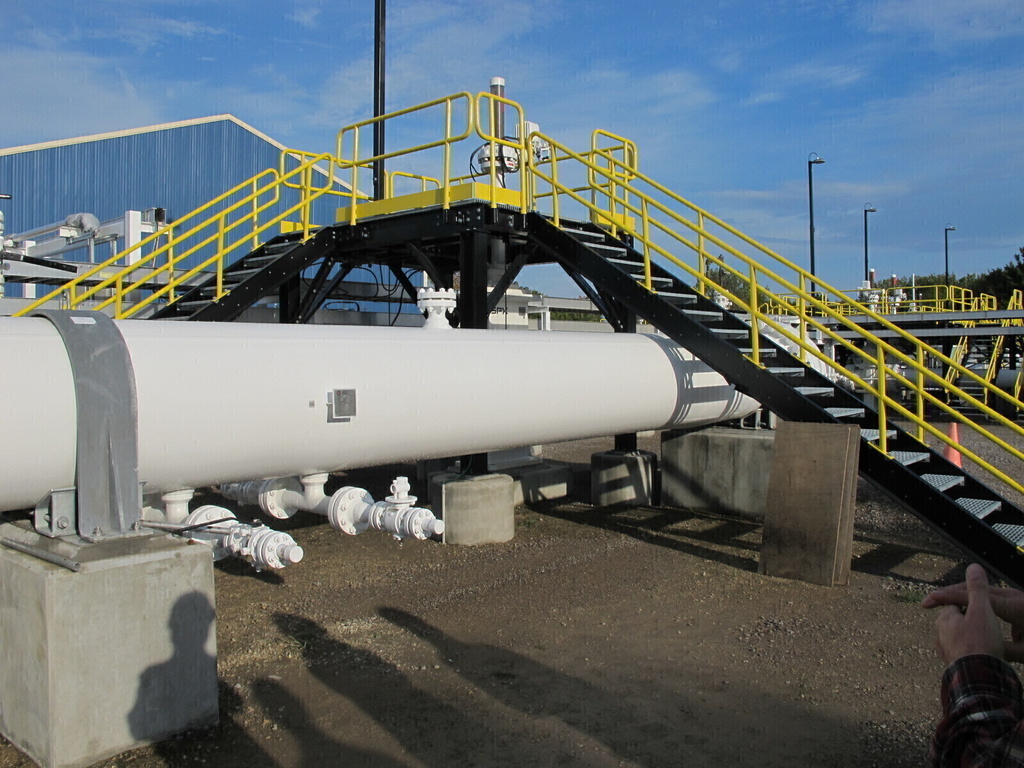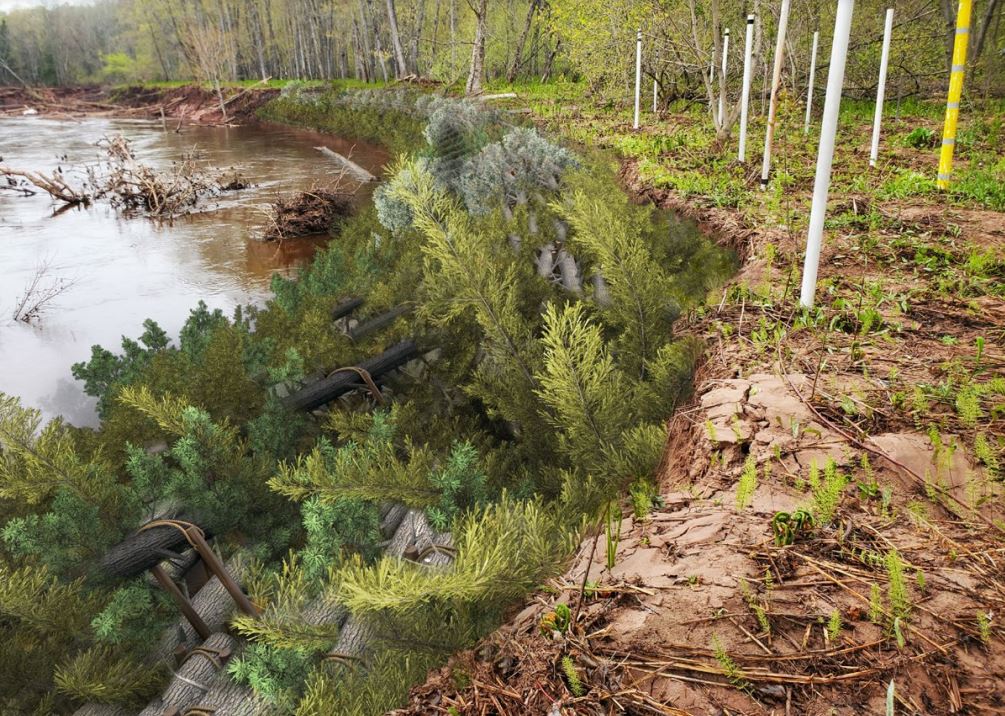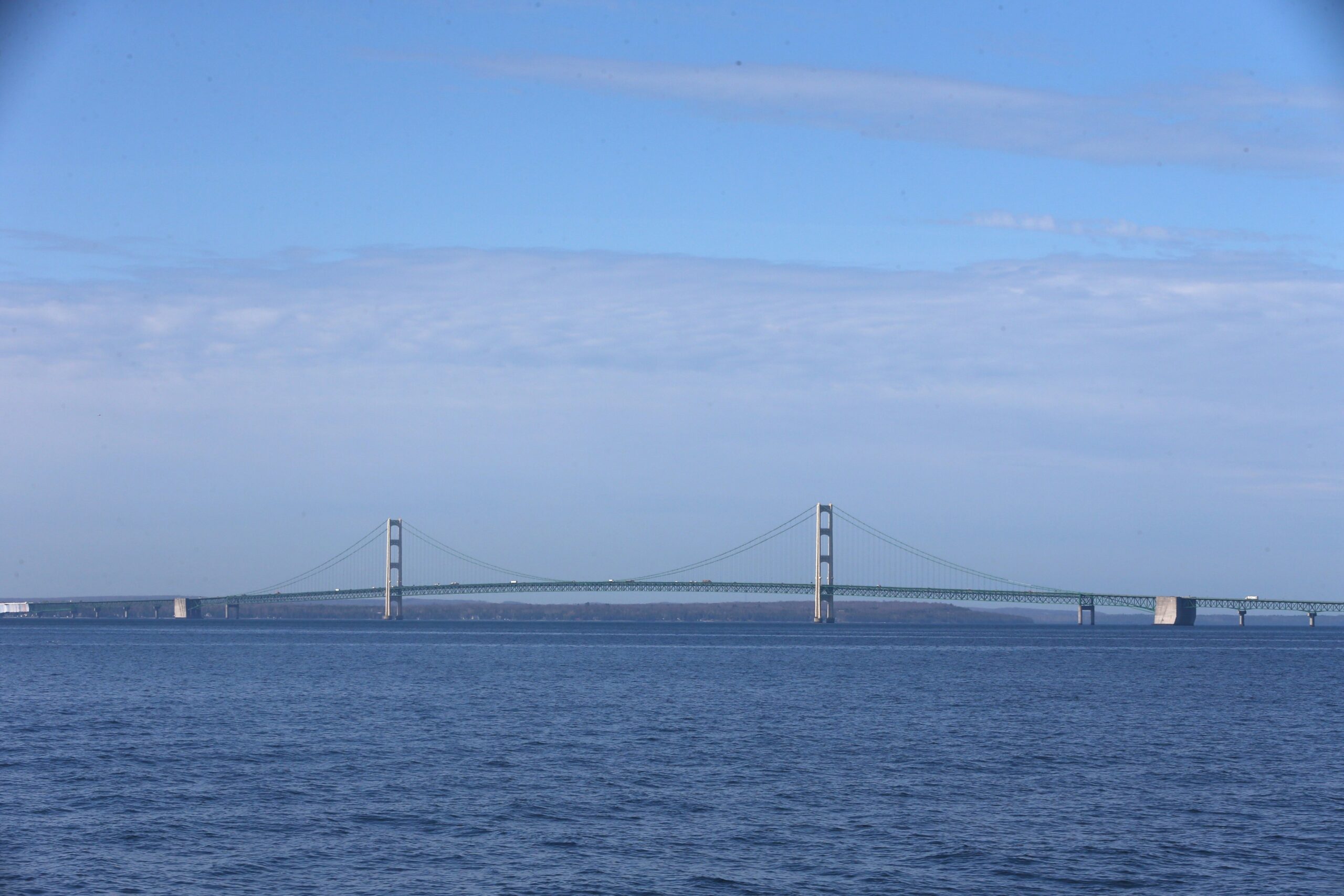A University of Michigan research scientist has created a computer animation of what a major oil spill at the Straits of Mackinac would do to Lakes Michigan and Huron.
The Enbridge Corporation’s Line 5 pipeline carries oil from Superior east under the Straits of Mackinac — where Lakes Michigan and Huron meet — and on into Canada. Environmental and fishing groups have been pushing Enbridge to improve or replace the line because of concerns over what a leak would do to the Great Lakes.
During a conference call set up by the National Wildlife Federation, scientist David Schwab said the water flow in the straits is large and can go east or west.
Stay informed on the latest news
Sign up for WPR’s email newsletter.
“I can’t think in my experience of another place in the Great Lakes where an oil spill would have as wide an area of impact in as short a time than in the Straits of Mackinac,” he said.
Schwab has compiled six videos of where a 12-hour oil spill from the pipeline would travel over 20 days and spread for a couple hundred miles.
The Enbridge Corporation, which has had pipeline spills in Wisconsin and Michigan in recent years, said that it’s proud of the operational history of Line 5 and said the Straits of Mackinac crossing has been incident-free since it was constructed in 1953. Enbridge said it’s committed to maintaining that record.
You can watch Schwab’s oil spill simulation in the video below:
Wisconsin Public Radio, © Copyright 2024, Board of Regents of the University of Wisconsin System and Wisconsin Educational Communications Board.





